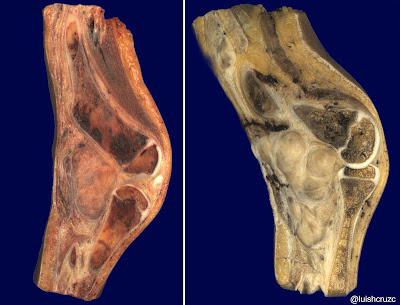 | ||
Paciente de 4 años con tumor en colon transverso, el diagnóstico (por histología e inmunohistoquímica) fue tumor miofibroblástico inflamatorio
|
Independent of the location, IMTs are more common in children and young adults, but patients of any age and sex can be affected.1 Besides the lung, IMTs can also occur in the retroperitoneum, mediastinum, spleen, brain, pancreas, liver, or GI tract as single or multiple tumors.2,3,4,5,6,7 Although most authors admit that an ITM is a benign tumor, the recurrences and metastases presented in some of the reported cases1,6 may lead to a reclassification of this tumor as having uncertain malignant potential.
In the colorectal segment, the first case of IMT was described in the rectum by Coffin et al3 in 1995. Between 1995 and 2012, according to our knowledge, the number of reported cases rose to 24,1–17










